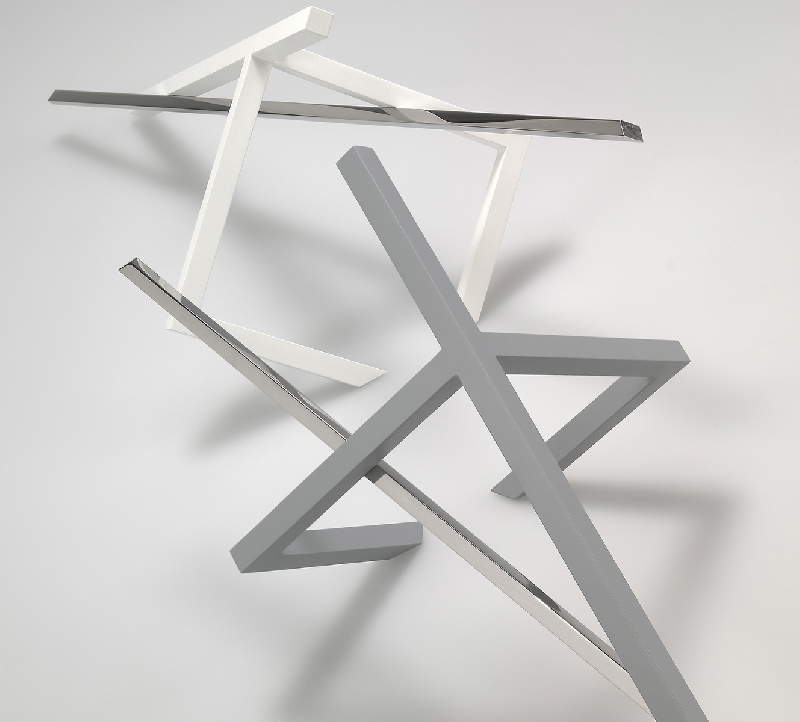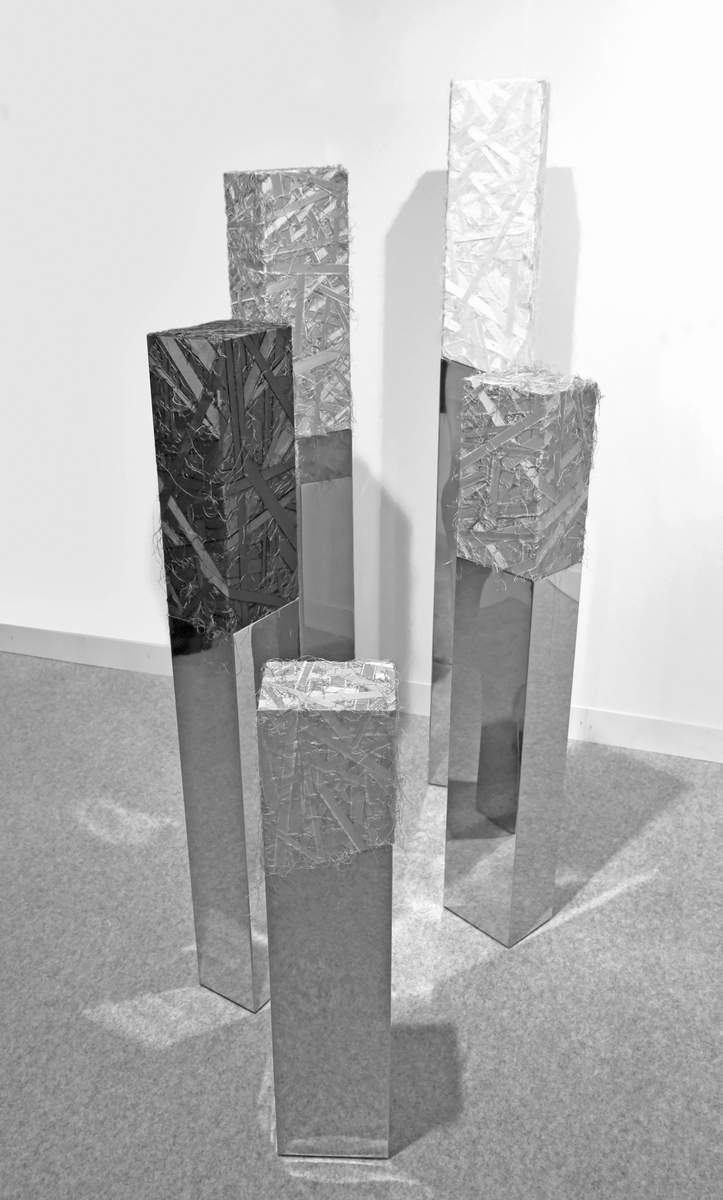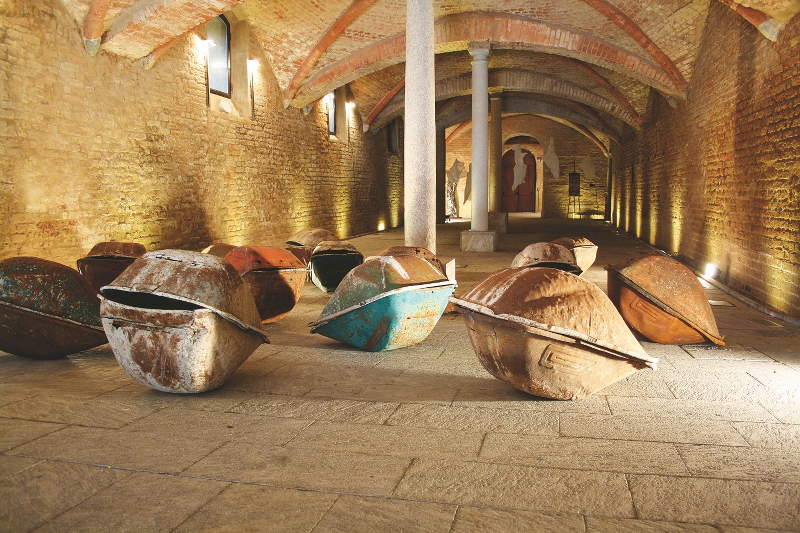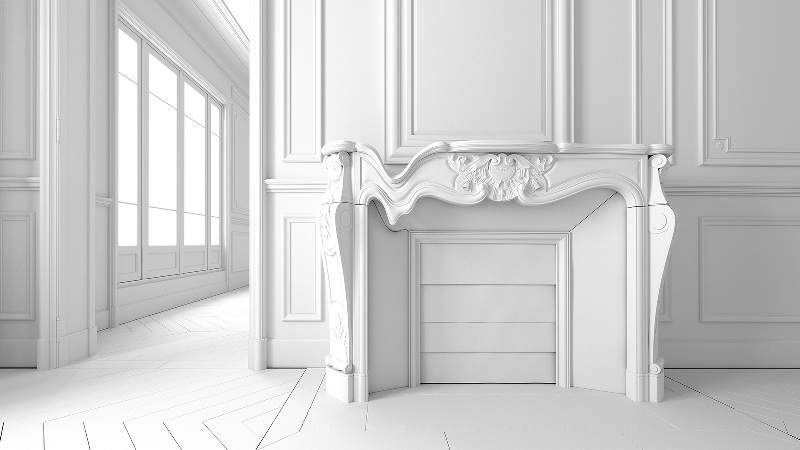A group formed at the end of the first lockdown, in June 2020, to reaffirm its creative existence in the face of the cancellation of many cultural activities imposed by the Covid-19 pandemic: this is the independent group The Moscow Hour, which is now exhibiting its works until August 29 at the Castello dei Paleologi in Casale Monferrato, in what is the group’s first exhibition, Experience #02.
The group is composed of eleven artists /AquaAura, Giuliano Caporali, Loretta Cappanera, Elisa Cella, Andrea Cereda, Angelica Consoli, Nadia Galbiati, Marco Grimaldi, Alex Sala, Matteo Suffritti, Manuela Toselli), united not so much by their belonging to well-defined movements or linguistic areas, but by their intention to establish a dialogue between imaginative worlds that are also very different from each other, although pertaining to an area that lies between lastration and conceptual practices. This is alluded to by the name of the group, which takes its cue from a quote by Vasily Kandinsky, taken from the autobiographical book Glances at the Past (1913), in which the Russian artist recalls the strong emotion aroused in him by the multiplicity of colors that the light of a winter sunset generates by reflecting on the phantasmagorical architecture of the Kremlin; a multiplicity, however, that, as in a large orchestra composed of different instruments, is able to tune in and generate a symphony. And it is precisely the coexistence of such different modes of expression that appears to be a feature of the contemporary artistic horizon, no longer dominated by a prevailing movement or trend, as in the past, but fragmented into many individualities that proceed independently.
If, however, the first planned exhibition, Experience #01 (which was to take place in the spring, at the Rocca di Umbertide, and has been postponed to next fall due to the suspension of cultural activities caused by the recrudescence of the epidemic) was to be, and will be, a full dorchestra, a path in which the peculiar traits of each artist are emphasized and amplified, even in deliberate contrast to each other, this second movement of Moscow’s Lora is intended rather to be a pianissimo, or an adagio, in which the dystonias, the louds of the first project are replaced by a softer, uniform and whispered mood, represented by the color choice to which all the artists have adhered, set on noncolor, or rather on a color that emerges uncertainly, dirty, as if by subtraction, between the prevailing black and white.
This happens especially in the main exhibition space, a large open space where the works, both wall and sculptural, are articulated as a continuous path, from the deep blues of Marco Grimaldi ’s nebulae to Elisa Cella’s atomic constellations, rarefied and immaterial, though inspired by the minimal elements of matter; from the impossible, empty, white interiors of Aqua Aura’s digital photographs, to the color full in itself of life, even when it is only color and only black or white, of Giuliano Caporali’s canvases; from the plots of tales, myths and lived experience of Loretta Cappanera’s textile works, to Manuela Toselli’s weaves of silk and mirrors, of feeling and rationality, to the current reality distilled by Matteo Suffritti in installations that, making use of photography, summarize the drama of migration, for example in a pair of arms emerging from a pool of water. While in the two towers, spaces with a more pronounced character, which have the strength of architecture with a defensive purpose, contrasts resonate again: in one keep, the contrast between the cold, rational and architectural constructions of Nadia Galbiati, and the warm structures of Andrea Cereda; in the other, the contrast between an installation, that of Alex Sala, which questions the individual, more aleatory than concrete things, objects and places, where the individual himself dwells, and a research, that of Angelica Consoli, in which instead precisely the deepest dimension of the god, the sense of the sacred, is found in small everyday objects with symbolic-religious value.
However, the works in the towers are also marked by monochromaticism, even though they participate in that tonality of the whole that is not only a question of color, but of poetics and message: the exhibition at the Castello di Casale intends to propose itself, the artists say, “as a visual carpet that flows fluidly, from one work to another, as a sort of background, as a discreet accompaniment to a narrative voice that, however, is silence. This voice, this silence, we could define it as a kind of Real that overlaps with the languages as the limpprint of the historical moment in which the exhibition is placed, which is external to it and yet looming. Isolation and pandemic have distanced us from each other and taught us distrust. A mistrust that has slowly become distance from everything that used to be our everyday life. This forced reality within which an organism, very small and invisible, has led us, has also changed the dynamics of our own activity as artists, our placing ourselves in front of creativity. In the general background of this sub-reality (or neo-reality) that has erased every customary reference, every habit; in which every social bond, every natural gesture is soaked in disinfectant and faces are covered and erased by masks, we are losing color, the natural expression of being (or of having been).”
Compared to the first project, which could be read as a rebellion, even an angry one, at the first lockdown, as a stubborn claim of desistance, now, as the pandemic continues, in the uncertainty of the looming reality, in the knowledge that we are inside an epochal turning point, the reassertion of the necessity of art, according to The Moscow Hour, must be made in a hushed voice. “Yet under this blanket we exist. We are inside a portion of the future, however dystopian,” the artists of The Moscow Hour write further. “The exhibition, however, does not want to shout, it does not want to claim anything, on the contrary. It would like to be a light flow of visions, emotions and thoughts, as if to say, We are here. Our state of mind, suspended and uncertain, is like that of the viewer. Like a gray-scale photograph, like a painting without color. [ ] We will enter the scene with a murmur, so as not to disturb, a background buzz within which the only note that stands out is our declared diversity: our being tone slips.”
The exhibition can be visited on Saturdays and Sundays from 10 a.m. to 1 p.m. and 3 p.m. to 7 p.m. Critical text: Chiara Tavella. Project support: Cultural Association Libera Mente - Laboratory of Ideas of Alexandria. With the collaboration of: AISA- Italian Environmental Safety Association Section of Casale - Municipality of Casale Monferrato (AL). For information: info@loradimosca.it, www.loradimosca.it.
 |
| Nadia Galbiati, Dialogue (2012-2020; stainless steel, painted iron, dimensions variable) |
 |
| Manuela Toselli, Mirror Ties #1-#2-#3-#4-#5 (2019; shantung silk, mirrored steel, wood and nails, environmental dimensions) |
 |
| Elisa Cella, 14-C06 (2014; oil on acrylic on canvas, 30x40 cm) |
 |
| Andrea Cereda, Caretakers (2013; wheelbarrow tubs, environmental dimensions) |
 |
| Aqua Aura, The Party is Over (2020; digital print on cotton paper, 101 x 180 cm) |
 |
| The Moscow Hour, an artist group formed at the end of the lockdown, introduces itself to the public |
Warning: the translation into English of the original Italian article was created using automatic tools. We undertake to review all articles, but we do not guarantee the total absence of inaccuracies in the translation due to the program. You can find the original by clicking on the ITA button. If you find any mistake,please contact us.